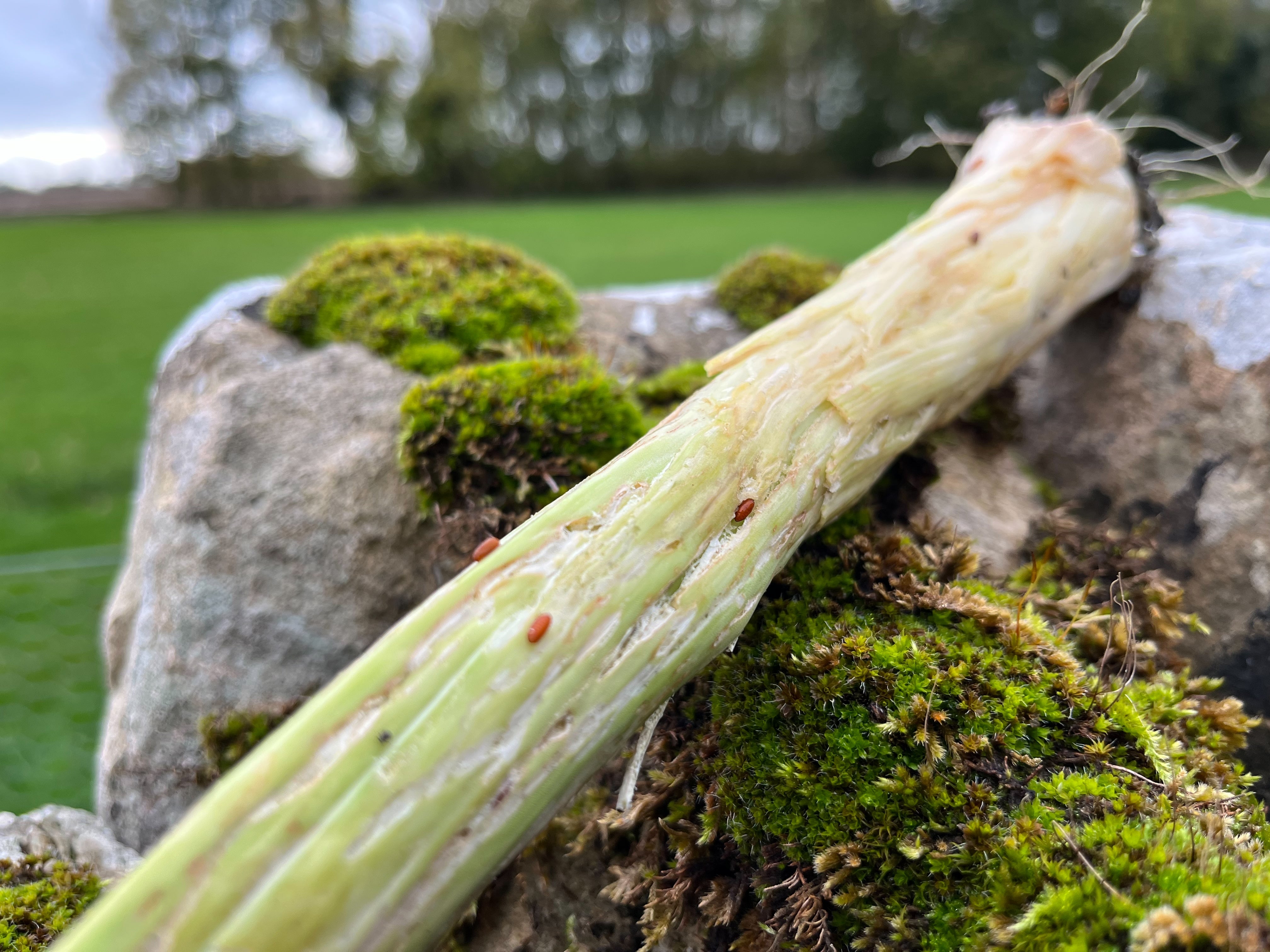Miners strike!

We had a bit of a rude surprise this week when we realised that Genus HQ had been invaded by hundreds of uninvited miners. Not the miners who, in centuries past, inhabited the nearby labyrinthine complex of tunnels and shafts in search of Cotswold stone, but of the two-winged variety whose immature offspring have ravaged our carefully grown leeks.
Yes, the miners have struck - we've been attacked by Phytomyza gymnostoma, the Allium leaf miner, a fly whose maggots bore their way through the stems of onions, shallots, leeks, and garlic leaving the plants unusable.
First discovered in 2002, they now appear to be well entrenched throughout the country. They’ve ruined a whole bed of our leeks but the recent planting of our onions sets and garlic may have missed a critical part of their lifecycle and prevented further annexation into the other vegetable beds, at least for now.
This 5mm long fly usually manages two generations within the growing season. The first, appearing around April or May has less effect than the latter. The adult fly shows signs of its visit with a slight streaking or mottling of the leaves but, after it has laid its eggs, it's the maggot that causes the worst of the damage as it burrows its way through the inner layers of the leek, resulting in the plant becoming limp and splitting along its flanks. Dissecting the leek stem reveals the active maggots and the clearly visible chrysalis stage (pictured).
There is no chemical control available to gardeners for this insect and next year we’ll prevent it gaining access to our leeks in the first place by enclosing the bed in fine horticultural mesh. This approach using a physical barrier like mesh or netting against pests rather than chemicals has worked wonders with our brassicas, and the Genus kitchen without baked cheesy leeks is like a Christmas without sprouts.







